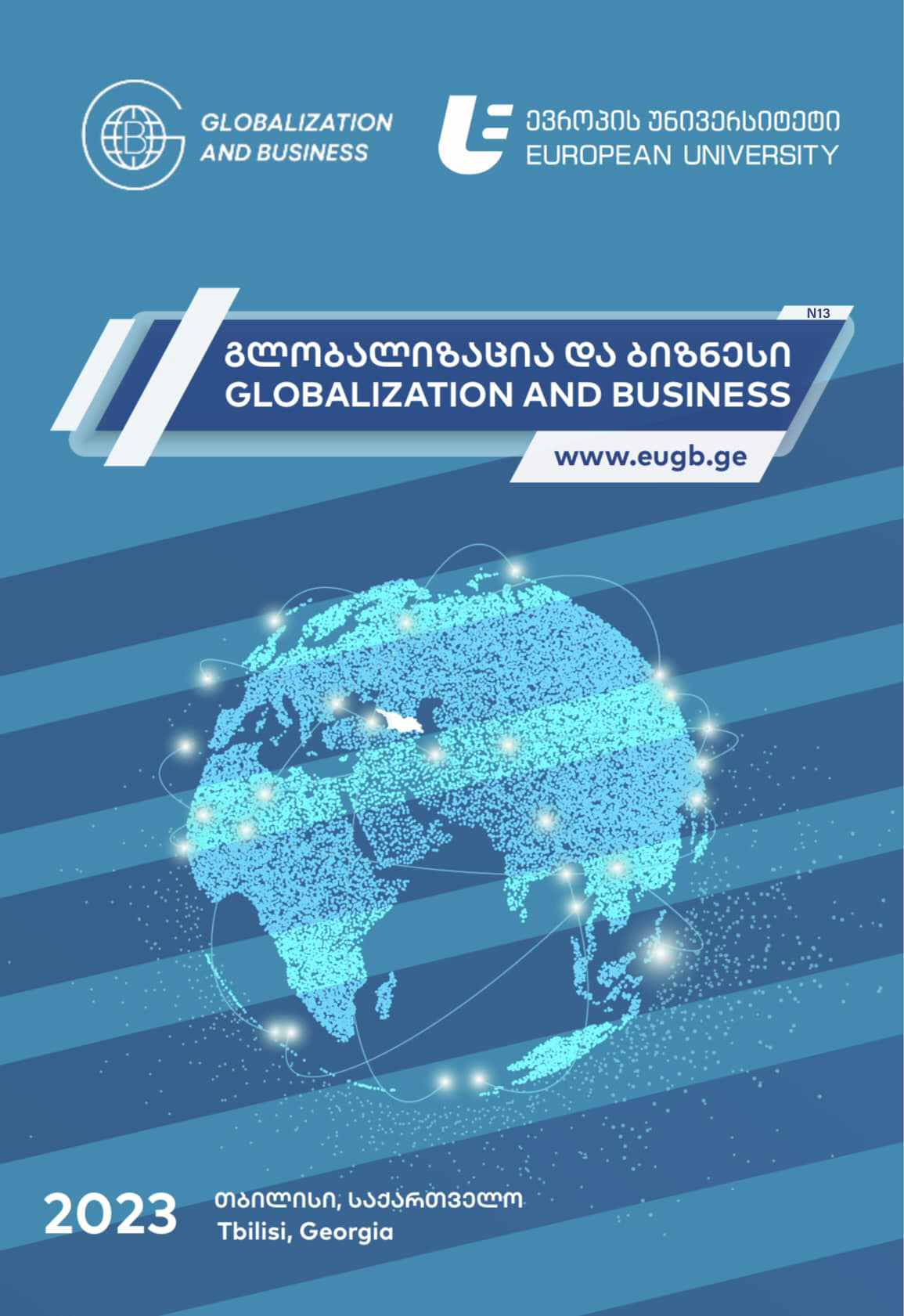FEATURES OF PUBLIC DEBT REGULATION IN GEORGIA: CURRENT CIRCUMSTANCES AND MODERN CHALLENGES
DOI:
https://doi.org/10.35945/gb.2022.13.004Keywords:
Public Debt Management, Exchange Rate Stabilization, Monetary Policy, Sustainable Development Of Economy, Factors Affecting Domestic And External Debt, Nominal Effective Exchange Rate, Real Exchange RateAbstract
The article addresses the issues of ensuring the exchange rate stability of GEL - the national currency of our country and effective management and regulation of public debt as well as attaches weight to the mechanisms for overcoming the challenges of economic development in the country and to the selection and use of flexible tools.
The article highlights the efforts of the leaders of the government and the National Bank of the country in developing and implementing optimal macroeconomic policies, as well as in maintaining monetary policy stability and achieving sustainable economic development.
Furthermore, considerable attention is given to the GEL exchange rate not only against to major currencies - the USD or the euro - but also to the currencies of the other partner countries of Georgia.
The article analyzes the dynamics of changes in the GEL exchange rate against the currencies of partner countries, based on the statistical data of the National Bank of Georgia. Factors influencing effective nominal and real exchange rates and government domestic and external debt are also assessed at different time intervals.
Thus, the purpose of this article is to identify the issues related to the management and regulation of public debt based on the analysis of the dynamics and structure of the public debt of Georgia, as well as to study the factors that have positive and negative effects on them.
This article aims to identify the issues related to the management and regulation of public debt obligations, on the basis of public debt sustainability analysis.
The article, on the basis of statistical data, analyzes the dynamics and structure of public debt in 2010-2020. The problematic issues in the financial and monetary system are also identified and their determinants are investigated.
Recommendations have been developed to reduce the debt burden and overcome the negative consequences caused by them.
Based on the analysis of the economic situation in Georgia and the dynamics of the exchange rate, the recommendations for stabilizing the exchange rate of the financial sector, effective management of public debt and achieving sustainable economic growth have been developed in this article.
Subject and object of research. The subject of the article's research is to identify problems related to the fluctuation of the Georgian national currency exchange rate and public debt regulation. While the object of the article is monetary policy that have been developed and implemented by the National Bank of Georgia and the Ministry of Finance of Georgia.
Research methods. Relevant scientific literature as well as statistical data from the National Bank of Georgia, the Ministry of Finance and the National Statistics Office of Georgia were found at the initial stage of the research. In addition, the studies and articles by Georgian and foreign scholars on public debt issues and the materials of the International Monetary Fund were used.
The scientific value of the article. The article analyzes the dynamics and structure of the GEL exchange rate and public debt in 2010-2020 based on the statistical data of Geostat and the Ministry of Finance of Georgia. Problematic issues in the field of finance and monetary-credit have been identified and their causes have been investigated. The recommendations have been developed to alleviate the debt burden of Georgia and overcome the negative consequences caused by them.
Based on the analysis of the economic situation in Georgia and the dynamics of the GEL exchange rate, the article develops recommendations for improving the financial sector, stabilizing the exchange rate and ensuring effective public debt management and sustainable economic growth.
It should also be noted that the article addresses and assesses the approaches of the leaders of the Government of Georgia and the National Bank to ensure the formation and improvement of a stable macroeconomic environment. The role of monetary policy in ensuring the sustainable development of the economy is revealed. In addition, the mistakes in exchange rate regulation and public debt management are also identified and assessed.
The article substantiates the crucial role of ensuring the stability of the GEL exchange rate in achieving economic growth. Besides, reviewing the GEL exchange rate is important not only against the USD but also against the currencies of other trading partner countries. Accordingly, based on the statistical data, the paper also analyzes the dynamics of changes in the GEL exchange rate against the currencies of partner countries.
The article also analyzes the key factors affecting both effective nominal and real exchange rates and domestic and external debt at different time intervals.
Downloads
Downloads
Published
Issue
Section
License
Copyright (c) 2022 Globalization and Business

This work is licensed under a Creative Commons Attribution-NonCommercial-ShareAlike 4.0 International License.









